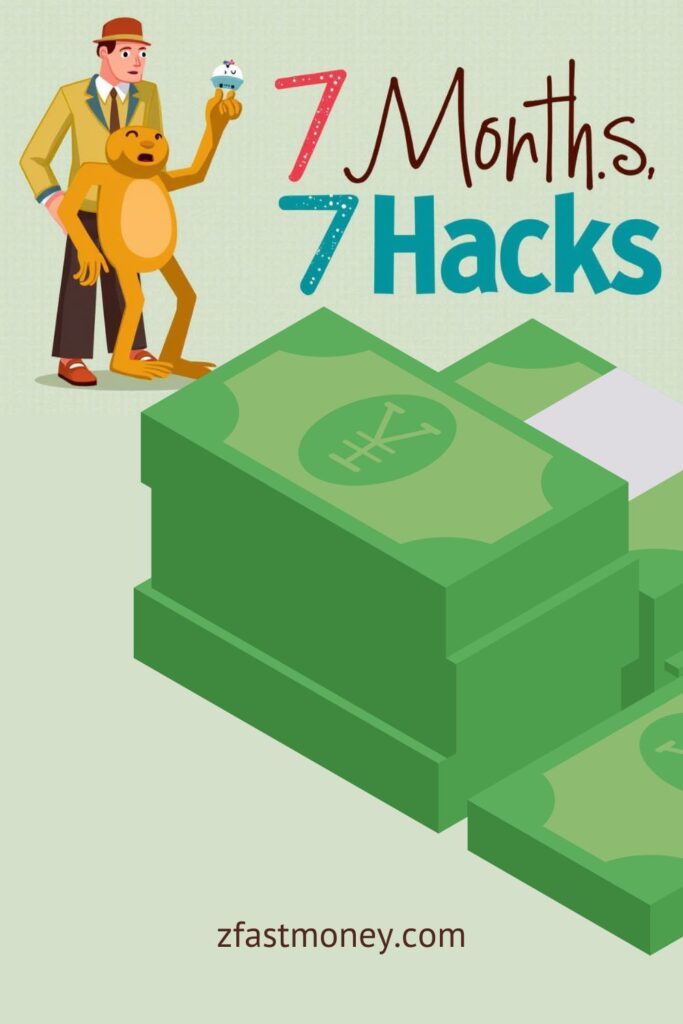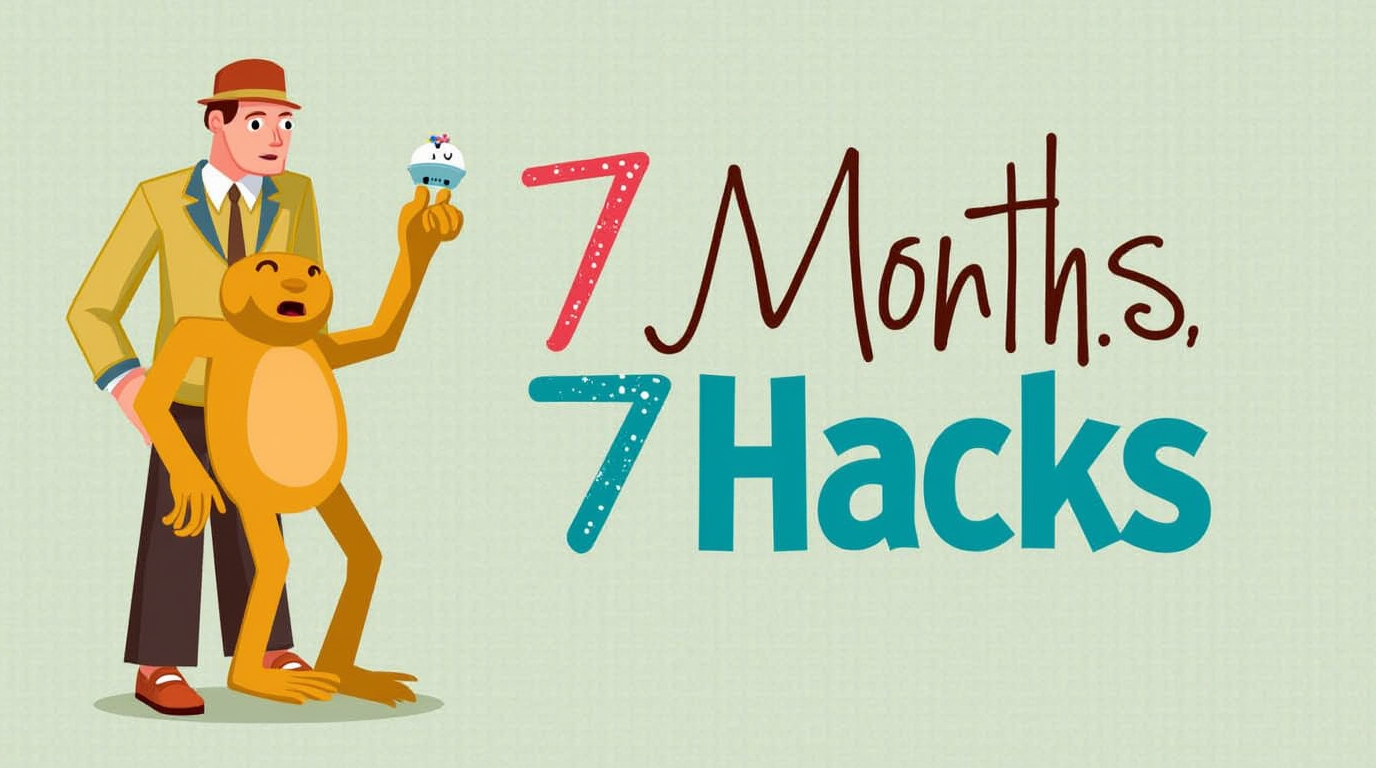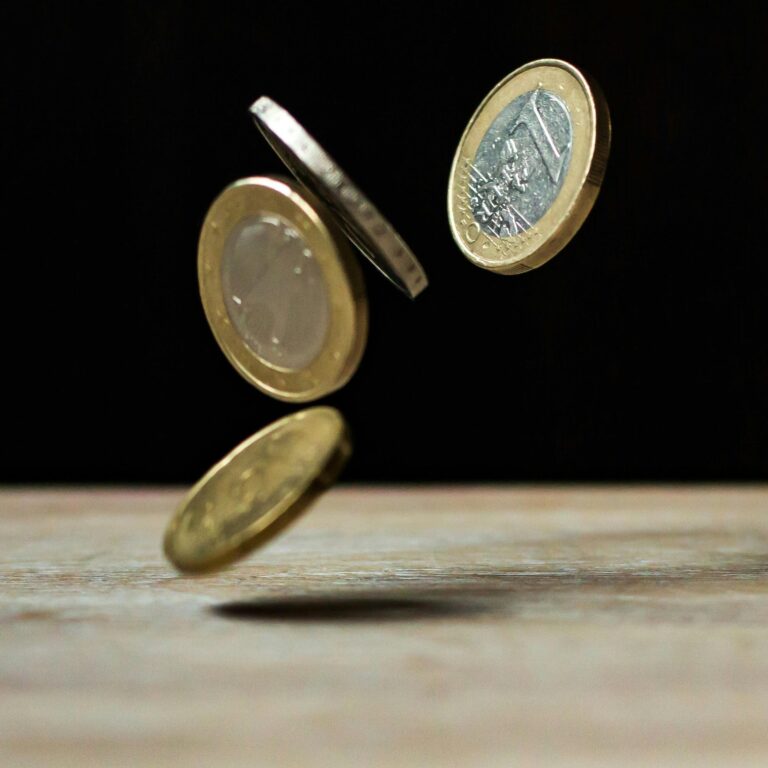7 Months, 7 Hacks: The Unconventional Moves That Saved Us $24K
Hey there. Let’s have some real talk.
Seven months ago, I was staring at my ceiling at 3 AM, doing that fun mental math that I’m sure you’re familiar with. You know the one: income minus mortgage minus car payment minus groceries minus that one mysterious subscription you forgot to cancel… equals, well, not a lot. My husband and I weren’t broke, not by a long shot. We were comfortable. But we were also… stuck. Stuck in a cycle of “good enough.” Our dream of a hefty down payment on a forever home, of true financial freedom, felt like a distant, foggy shoreline we were rowing towards with spoons.
The standard advice felt so uninspired. “Make a budget.” (Did that.) “Cancel your latte.” (I make my coffee at home, thank you very much.) “Cut your cable.” (It’s 2024, who even has cable?) We needed something different. Something radical. We needed to shake up our financial lives like an Etch A Sketch and start fresh.
So, we did. We decided to get weird with it. We threw out the old playbook and spent seven months trying the most unconventional, sometimes downright quirky, money-saving strategies we could think of.
And the result? In just seven months, we socked away an extra $24,350.
No, that’s not a typo. It was a wild, illuminating, and honestly, super fun ride. And I’m going to share the exact seven hacks that got us there. Forget clipping coupons; this is a whole new level.

Hack #1: The “Shop My House” Safari
The Problem: We were hemorrhaging money on “little things.” A new throw pillow from Target, another kitchen gadget from Amazon, a cute top because it was on sale. We had what I call “Comfort Clutter”—stuff we bought to feel good for a fleeting moment, which then just became part of the landscape.
The Unconventional Hack: For one full month, we banned ourselves from buying anything new that wasn’t a consumable grocery item or a true emergency essential (like toilet paper or medicine). No clothes, no home decor, no books, no electronics. Nothing. Instead, we went on a “Shop My House” Safari.
How We Did It:
We dedicated a Saturday to this. We literally went through every single closet, every drawer, every cabinet, and every box in the garage with fresh eyes. We pulled everything out. It was chaos, but it was organized chaos.
- The “Forgotten Treasures” Box: We found things we completely forgot we owned. A brand-new set of watercolor paints, a pasta maker still in its box, three scented candles we’d been “saving for a special occasion.” These became our new sources of entertainment and joy. That weekend, we didn’t go out; we made pasta from scratch and I painted for the first time in years.
- The “Remix Your Wardrobe” Challenge: I’m guilty of “I have nothing to wear” syndrome while staring at a full closet. We took pictures of individual clothing items—all my tops, all my husband’s pants, etc.—and used a free stylebook app to create new outfit combinations we’d never thought of. It felt like getting a whole new wardrobe without spending a dime.
- The “Sell the Surplus” Pile: This was the game-changer. That bread maker we used twice? The extra set of dishes? The video games he’d already beaten? We listed them on Facebook Marketplace and Poshmark. We weren’t trying to build an empire, just to get rid of the excess and make a little cash.
The Staggering Result:
This one hack was a double whammy. We stopped the outflow of cash on random purchases, and we created a new inflow from selling our clutter. The first month alone, this saved us and made us a combined $950. It also completely rewired our brains to ask, “Do I already have something that can do this job?” before clicking “Add to Cart.”
Estimated Monthly Savings & Earnings: ~$950
Hack #2: The Subscription Guillotine
The Problem: Little $9.99 charges were bleeding us dry. Streaming services we barely watched, a meditation app I used once, a subscription box for my husband that he was lukewarm about, software renewals… they were like financial mosquitoes, small but endlessly annoying.
The Unconventional Hack: We didn’t just “review our subscriptions.” We brought out the guillotine. We canceled. Every. Single. One.
How We Did It:
I know it sounds terrifying. What about Netflix? What about Spotify? Here’s the rule we made: We canceled everything, no exceptions. We logged into our credit card statements and PayPal, hunted them all down, and clicked cancel.
Then, we waited.
We lived without them for a full two weeks. If, after two weeks, we felt a genuine, painful void—not just a mild inconvenience—we were allowed to re-subscribe to that one service.
The Staggering Result:
Guess how many we re-subscribed to? Two. Just two. We realized we were watching most of our shows on a service we kept, and we could happily use the free version of Spotify with ads while driving. We discovered the joy of our local library’s free digital apps, like Libby and Hoopla, for audiobooks and movies. We realized that “background noise TV” was a habit, not a necessity. That meditation app? Replaced by free guided meditations on YouTube. This brutal but effective method instantly clarified what we truly valued versus what was just a habit.
Estimated Monthly Savings: ~$185
Hack #3: The “Skill Swap” Social Life
The Problem: Seeing our friends is a non-negotiable for our mental health. But our social life was expensive. Dinner out here, brunch there, tickets to a concert… it all added up to an insane amount of money by the end of the month.
The Unconventional Hack: We proposed a “Skill Swap Supper Club” with our two closest couple friends. Instead of meeting at a restaurant, we would rotate hosting a dinner with a theme: teach the rest of the group a useful skill.
How We Did It:
It was honestly the most fun we’d had in years.
- Month 1 (Our House): My husband is a decent amateur mechanic. He taught everyone how to do a basic oil change and check their tire pressure and fluids. We ordered pizza (still way cheaper than a restaurant for 6) and saved everyone a future $80 trip to Jiffy Lube.
- Month 2 (Friend’s House): Our friend Sarah is an amazing baker. She taught us how to make incredible, no-knead artisan sourdough bread. We all went home with our own starter (which she nicknamed “The Dough-prah Winfrey Show”).
- Month 3 (Other Friend’s House): Our buddy Dave is a master cocktail maker. He taught us the science behind a perfect Old Fashioned and Margarita. We all chipped in for the ingredients, and it cost a fraction of a single round of drinks at a fancy bar.
We also did free things: hiking in state parks, beach days, board game nights, and exploring new neighborhoods on foot. We replaced expensive consumption with genuine connection and learning.
The Staggering Result:
We calculated that we were easily spending
600−600-600−
700 a month on social outings between the two of us. By shifting to skill swaps and free activities, we slashed that budget by about 80%. We still had a budget for a pizza night or ingredients, but it was a tiny fraction of what it once was.
Estimated Monthly Savings: ~$550
The Mindset Shift: This Isn’t About Deprivation
Okay, let’s pause here. I can feel what some of you might be thinking. “This sounds awful. This sounds like deprivation.” And I get it. For the first couple of weeks, it felt like that. But a powerful mindset shift happened around month two.
This wasn’t about what we couldn’t have. It was about what we could have.
- We could have peace of mind.
- We could have control over our money for the first time ever.
- We could have a future that wasn’t dictated by monthly payments.
Every dollar we saved wasn’t a dollar we “gave up.” It was a dollar we were investing in our own freedom. We were choosing our future home over a throw pillow. We were choosing financial security over a TV show we didn’t even like that much. It became a game. A joyful, empowering game where the prize was our own dream life. Framing it this way changed everything.
Hack #4: Pantry Roulette & The Reverse Meal Plan
The Problem: Our grocery bill was out of control. We’d meal plan, but then we’d get to the store and shiny new products would call to us. Or we’d buy ingredients for a specific recipe, use half of them, and the other half would wilt and die in the back of the fridge. Food waste was a huge, hidden cost.
The Unconventional Hack: We stopped planning meals and then shopping. Instead, we shopped our pantry first. We called it Pantry Roulette.
How We Did It:
Every Sunday, before making a grocery list, we would pull out 3-5 items that needed to be used up. A can of black beans nearing its expiration date, that half a bag of quinoa, the frozen chicken thighs, the slightly sad-looking bell peppers.
These items became our non-negotiable ingredients for the week. Our challenge was to build meals around them. We used a website called SuperCook, where you can plug in the ingredients you have, and it spits out recipes. It turned into a creative culinary challenge. That sad bell pepper and can of beans became amazing fajitas. That quinoa and some wilting herbs became a fresh tabbouleh salad.
We only went to the grocery store for the missing puzzle pieces—a lime, some sour cream, a head of lettuce. Our grocery lists shrank from a full page to a handful of items.
The Staggering Result:
This was one of our biggest savers. Not only did we slash our food waste to nearly zero, but we also stopped impulse buying at the grocery store. Our creativity in the kitchen skyrocketed, and we ate better, more interesting food than ever before. This hack alone shaved an incredible amount off our monthly food budget.
Estimated Monthly Savings: ~$600
Hack #5: The Low-Effort “Side-Hustle Stack”
The Problem: We knew a side hustle could accelerate our savings, but the thought of starting a whole new business or getting a part-time job felt exhausting. We already had full-time careers.
The Unconventional Hack: Instead of one big side hustle, we embraced the “Side-Hustle Stack”—a collection of small, low-effort, flexible gigs that we could do in our pockets of free time.
How We Did It:
We each picked a few things that didn’t feel like “work.”
- My Stack: I love dogs, so I signed up for Rover. I only accepted requests for dog-sitting in our home for dogs I knew would be easy. This meant I got paid to have a furry companion while I was working from home anyway. I also reactivated my Poshmark for selling clothes from our “Shop My House” cleanout.
- His Stack: My husband is a night owl. He would spend an hour or two after I went to bed doing online surveys on sites like Prolific and CloudResearch (formerly MTurk), which pay better than most. He also became the neighborhood “go-to” on TaskRabbit for simple furniture assembly, something he genuinely enjoys.
None of these things made us rich on their own. But stacked together? It was a powerful stream of extra income that went directly into our savings account.
The Staggering Result:
This was our biggest earner. Some months were better than others, but by combining 4-5 of these small income streams, we consistently brought in a significant amount of extra cash without burning ourselves out. It was found money, earned on our own terms.
Estimated Monthly Earnings: ~$1,200
Hack #6: The “Fun-velope” Hard Stop
The Problem: Even with all these changes, miscellaneous spending would creep in. A fancy coffee on a tough day, an impulse magazine at the checkout, a ticket to the movies. It was hard to track and easy to overdo.
The Unconventional Hack: We went back to a classic, but with a twist: the cash envelope system, but only for our fun/discretionary money. We called it the “Fun-velope.”
How We Did It:
At the beginning of each month, we agreed on a drastically reduced but still realistic “fun” budget. For us, it was $100 each. We would go to the ATM, pull out $200 in cash, and put $100 in my wallet and $100 in his.
This cash was for anything that wasn’t a planned necessity: coffee, a lunch out with a coworker, a beer after work, a new book. The rule was brutally simple: when the cash is gone, it’s gone. No cheating by using a debit card. If you ran out on the 20th of the month, you had to wait until the 1st of the next month for a refill.
The Staggering Result:
This created an incredible sense of mindfulness. When you have to hand over a physical $10 bill for two coffees, you feel it more than when you just tap your card. You start asking, “Is this really worth 10% of my entire fun budget for the month?” More often than not, the answer was no. It forced us to be intentional and savor the treats we did choose to buy.
Estimated Monthly Savings: ~$300
Hack #7: The 24-Hour “Dopamine Fast”
The Problem: We live in a world designed to make us spend. Instagram ads, targeted emails, Amazon’s “recommended for you,” the ease of food delivery apps. Our brains are constantly being hit with dopamine triggers tied to consumption.
The Unconventional Hack: Once a week, usually on a Sunday, we implemented a 24-hour “Dopamine Fast” from consumerism.
How We Did It:
From waking up on Sunday to Monday morning, we had a few simple rules:
- No opening any retail apps (Amazon, Target, etc.).
- No opening any food delivery apps (DoorDash, Uber Eats).
- No social media (to avoid comparison and targeted ads).
- No “window shopping” online.
Instead, we filled our day with things that provided a different kind of satisfaction. We’d go for a long walk, tackle a DIY project at home (using materials we already had), read books from the library, call our families, or cook an elaborate meal together. It was a forced reset for our consumer-driven brains.
The Staggering Result:
This hack is harder to quantify, but its impact was profound. It broke the instant gratification cycle. It created a clear boundary between our peace and the constant noise of the market. We stopped the “boredom scrolling” that inevitably leads to spending. The financial savings came from preventing impulse purchases we would have otherwise made on a lazy Sunday.
Estimated Monthly Savings: ~$150
The Grand Total: How It All Added Up
So, how did these seven quirky hacks get us to over $24,000? Let’s break it down.
- Hack 1 (Shop My House):
950x1month(initialpurge)+ 950 x 1 month (initial purge) + ~950x1month(initialpurge)+200/mo ongoing savings = $2,150 - Hack 2 (Subscription Guillotine):
185x7months=∗∗185 x 7 months = **185x7months=∗∗1,295** - Hack 3 (Skill Swap Social):
550x7months=∗∗550 x 7 months = **550x7months=∗∗3,850** - Hack 4 (Pantry Roulette):
600x7months=∗∗600 x 7 months = **600x7months=∗∗4,200** - Hack 5 (Side-Hustle Stack):
1,200x7months=∗∗1,200 x 7 months = **1,200x7months=∗∗8,400** - Hack 6 (The Fun-velope):
300x7months=∗∗300 x 7 months = **300x7months=∗∗2,100** - Hack 7 (Dopamine Fast):
150x7months=∗∗150 x 7 months = **150x7months=∗∗1,050**
Total Saved in 7 Months: $23,045
(We hit our $24,350 goal thanks to a couple of really good Rover months and selling a few bigger furniture pieces, but this is the baseline!)
This journey started as a radical experiment, but it became our new normal. We’re not as strict now, but these seven months completely reshaped our relationship with money, with our stuff, and with each other. We learned that financial freedom isn’t about earning more, it’s about being more creative and intentional with what you already have.
We’re now happily shopping for that forever home, armed with a hefty down payment and a whole new outlook on life. The best part? We feel richer than we ever have, and it has nothing to do with the number in our bank account.
So I have to ask you: What’s one unconventional thing you could try? What weird, quirky hack could you implement tomorrow? You might be surprised at just how much your own version of freedom is waiting for you.
Pin this for later, and let me know in the comments which hack you’re going to try first!





